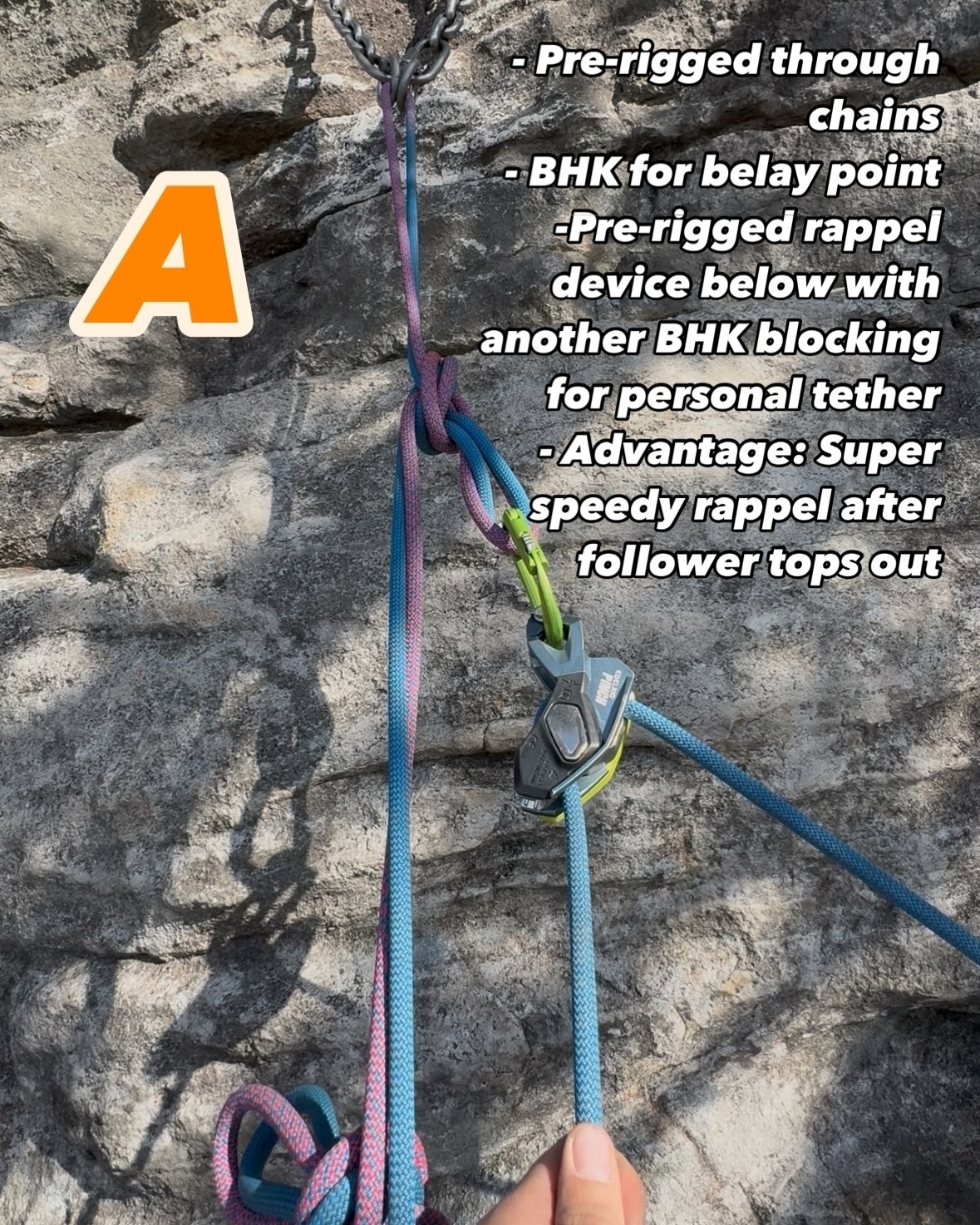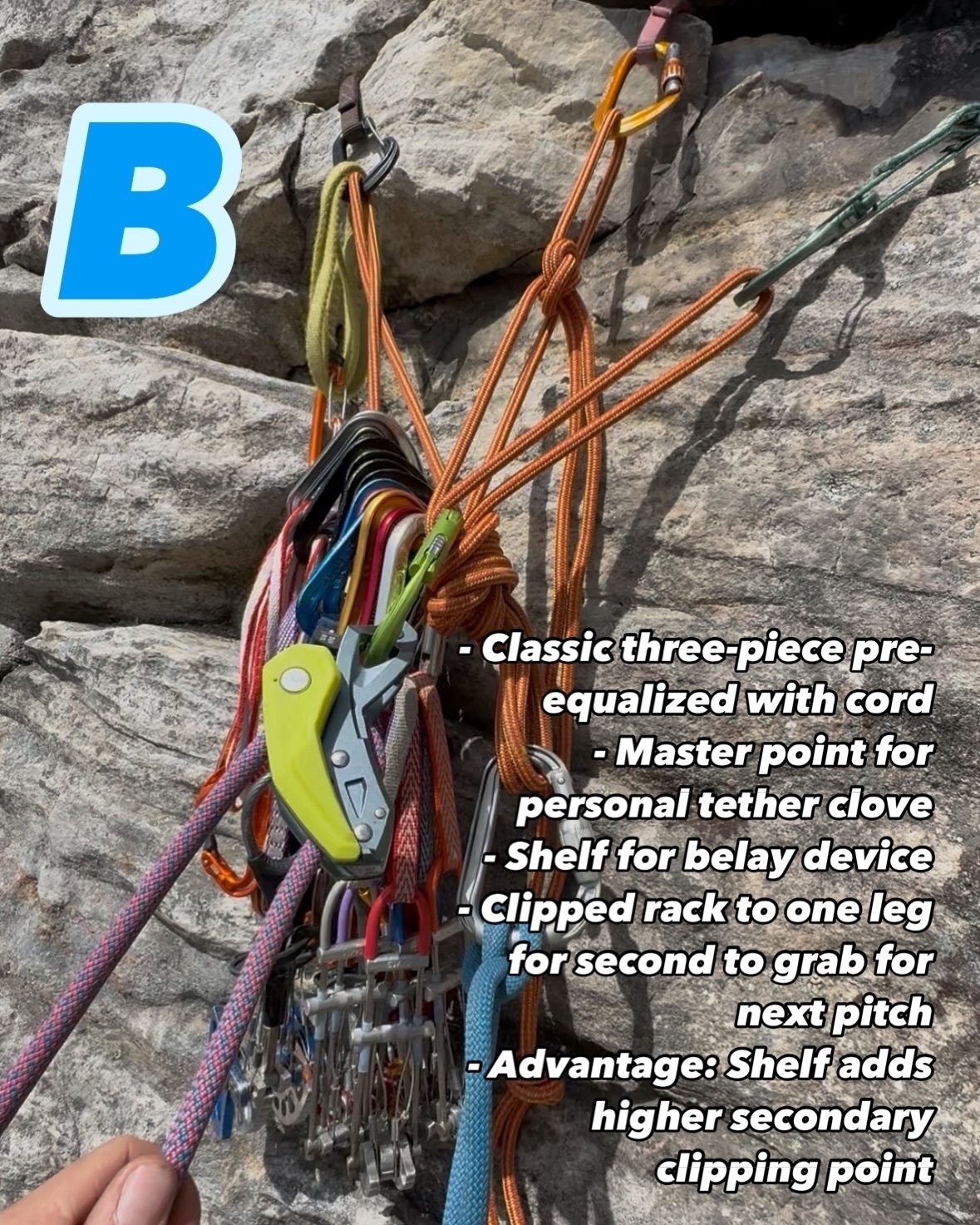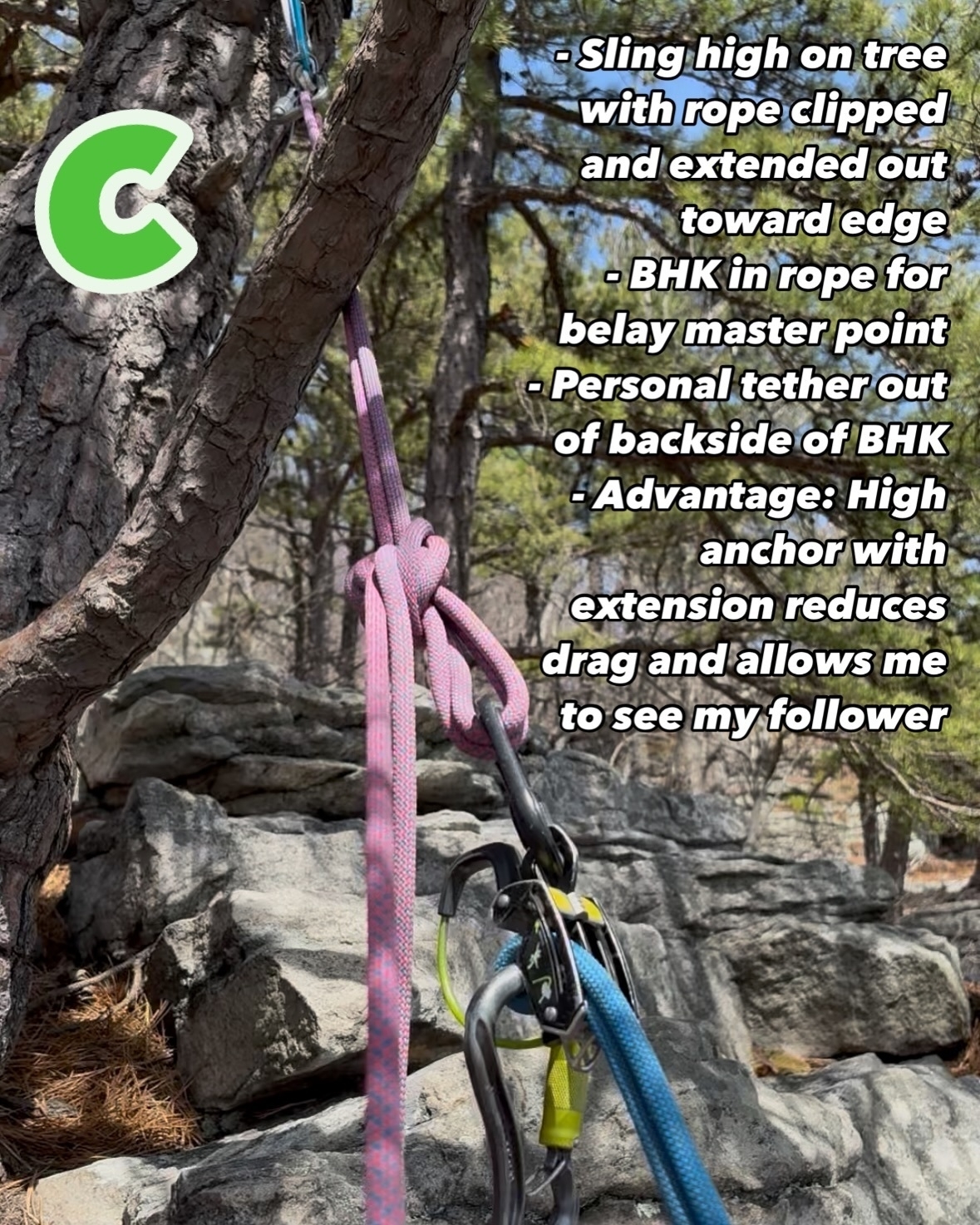Let’s nerd out on some anchors I used this weekend at the Gunks! Let me know your favorite one and any questions. 🤘
A: I use this for the top out whenever possible because it sets us up for an efficient rap back down, and using the rope makes for a strong-yet-stretchy anchor.
B: When the anchor’s gear is close together, this classic setup is quick and clear. And getting the rack ready for your second to easily grab is just polite, plus reduces the chance of a dropped piece during a handover.
C: Make your master points high and tight! But then don’t be afraid to extend it to better position the rope and yourself to give an effective belay. Your tether being part of the anchor can complicate things if leading in blocks, but this was the top out so it was ideal.
@newyorkoutdoorguides @lakeplacidadk #gunks #climbing #HireAGuide


